In seeking to generate interest, our aim was to reach Greater Manchester’s diverse population – and be able to prove we had done so.
This meant embracing a multi-channel approach to communications and outreach.
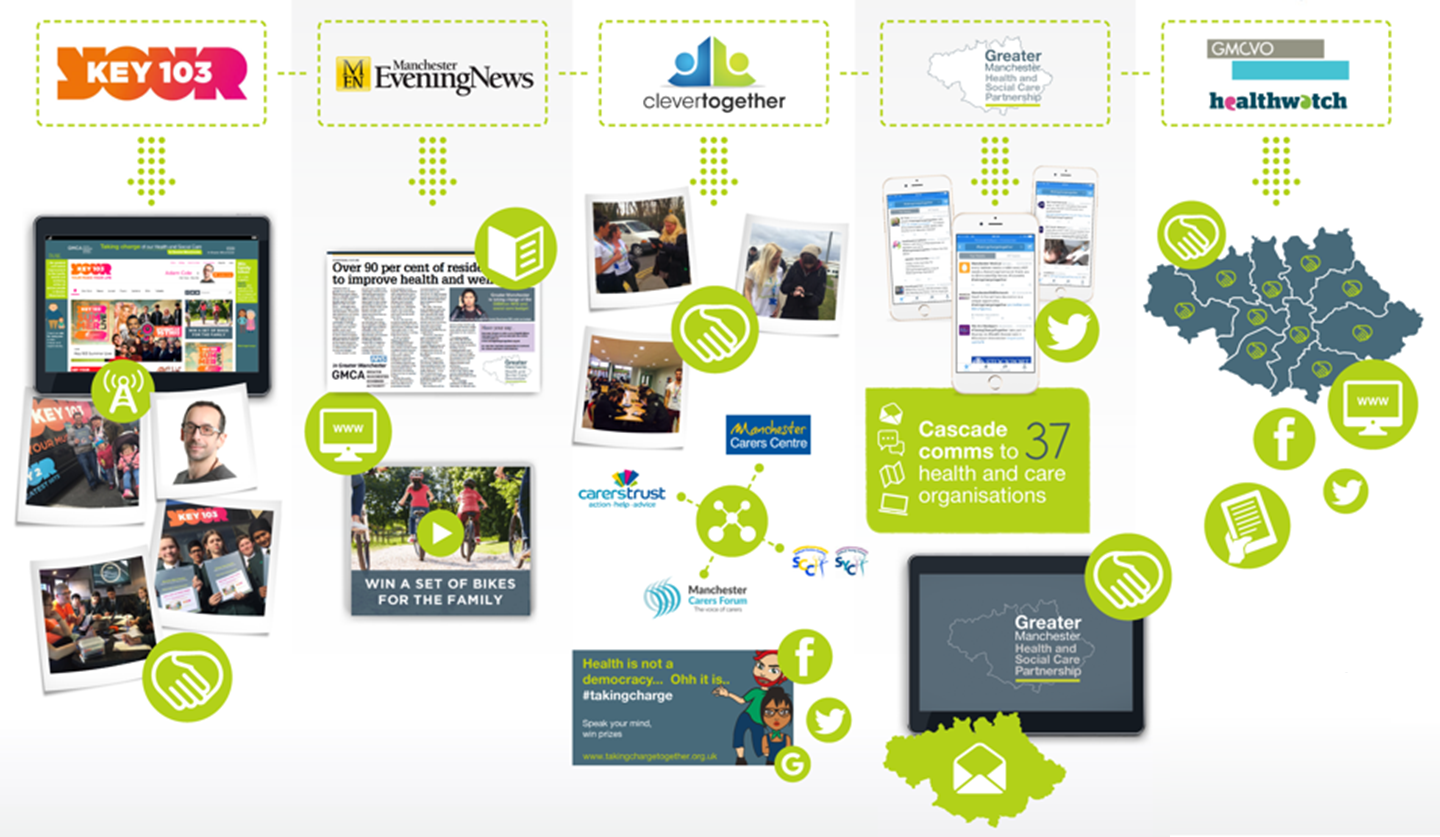
The shared mandate was used to steer and validate all project communications and tools to capture the voice of GM’s people. For example:
The GMHSC Partnership used the mandate to:
- develop a campaign resources and communications toolkit so that all partner organisations, including the 37 health and social care organisations, police, fire, voluntary and community organisations and the ten Healthwatch organisations across Greater Manchester could help to promote the project. Each of these was given regular updates on how the campaign was doing and tactics to support the promotion of the campaign.
MEN and Key103 used the mandate to steer the development of engagement materials (online, print and broadcast content for editorial and promotional efforts) to:
- generate interest in a Greater Manchester conversation about ‘taking charge’, and
- to sign-post residents to our virtual and physical events.
Key103 used the mandate to steer the design and use of:
- a “community outreach bus” to tour the 10 regions of GM, again to:
- generate interest in a Greater Manchester conversation about ‘taking charge’, and
- to sign-post residents to our virtual and physical events;
GMCVO used the mandate and their partnership with local Healthwatch organisations to:
- design print-based engagement materials to win the interest of (and enrol the involvement of) “seldom heard” residents – hard to reach and excluded groups;
- design a series of physical events to capture the voice of these groups on the “taking charge” agenda broadly and on five focused perspectives, including disability and youth issues; and
- design a process that can sign-post seldom heard people to virtual the projects events (as described below).
Clever Together used the mandate to:
- develop digital marketing assets to raise awareness about the project, and
- develop digital marketing assets to sign-post residents and the health and care workforce (i.e., through a focused Facebook, Google and Twitter ad campaign);
- design a process for their ‘activation team’ to visit colleges and win the interest of students;
- design and host a ‘microsite’ that provides the general public, workforce and carers with access to a virtual event composed of:
- an online workshop (a crowdsourcing process) where people are facilitated to:
- reveal insight into what the people of Greater Manchester believe blocks or enables healthy choices,
- create a new understanding and a shared narrative for the region upon which new interventions can be designed or existing work can be scaled, and
- identify great work in the region that can be celebrated.
- a short snapshot survey – a questionnaire gateway to the online workshop that was designed by Clever Together to shed light of the health and health wishes of the GM’s people.
- an online workshop (a crowdsourcing process) where people are facilitated to:
Finally, as a way to incentivise involvement, the steering group also used the mandate to design a competition for the public to win a set of family bikes (this was administered by Clever Together).
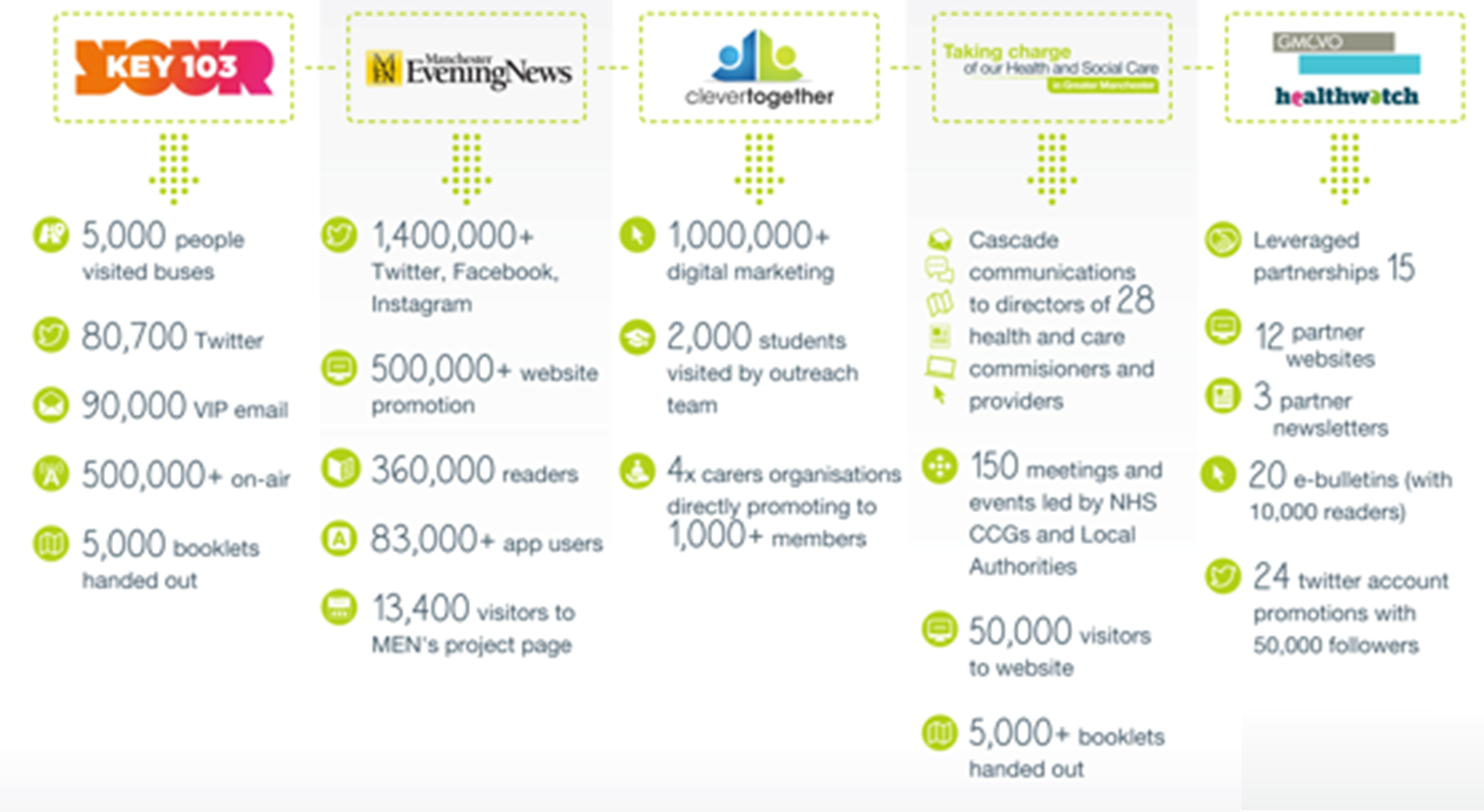
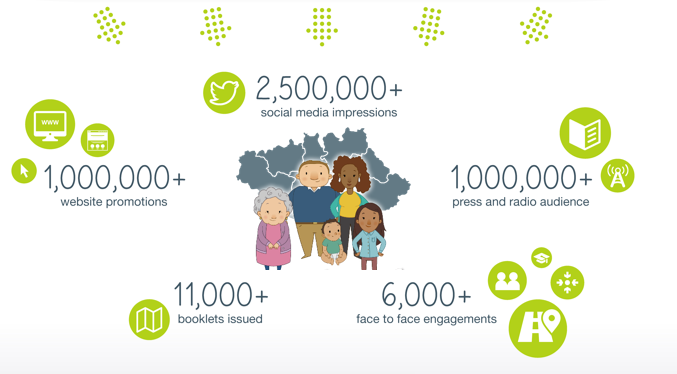
Collectively, the project group members’ engagement reached people from every corner of Greater Manchester.
Our digital snapshot survey and face-to-face workshops ensured:
- we captured the voice of our population through channels that are easy for them to engage with,
- we recorded the voice of our population in a way in which it can be analysed to generate real insight – with transparent and defendable conclusions,
- we captured demographic information to prove we had indeed engaged with a representative sample of the region.
For example members of the public joined in from every locality in the city, in roughly the same proportions as each locality’s populations:
| Participant’s borough/area of residence | % of Total Participants | % of Total Population |
| City of Manchester | 16% | 19% |
| Oldham | 12% | 8% |
| Tameside | 10% | 8% |
| Stockport | 9% | 10% |
| City of Salford | 9% | 9% |
| Trafford | 9% | 8% |
| Bolton | 8% | 10% |
| Rochdale | 7% | 8% |
| Wigan | 7% | 12% |
| Bury | 6% | 7% |
| I don’t live in the Greater Manchester area | 6% | 0% |
| Rather not say | 1% | 0% |
| I am not sure | 1% | 0% |
| Glossop | 0.4% | 1% |
A table to show where our participants live in the 11 areas of Greater Manchester.
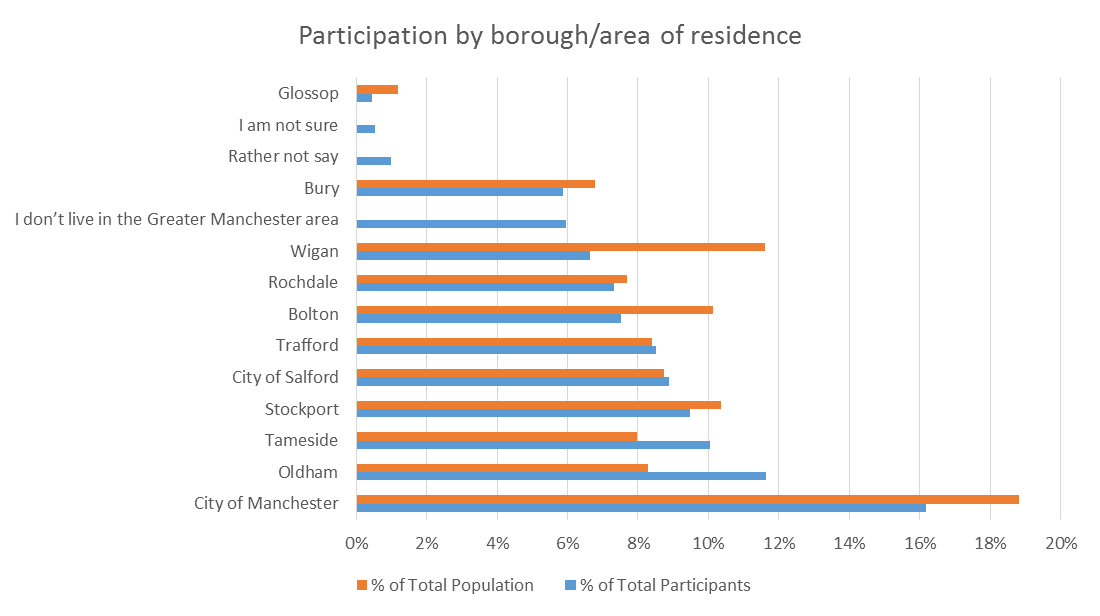
We did, however, have a slight skew toward women involved in the snapshot surveys and online conversations (63.5%).
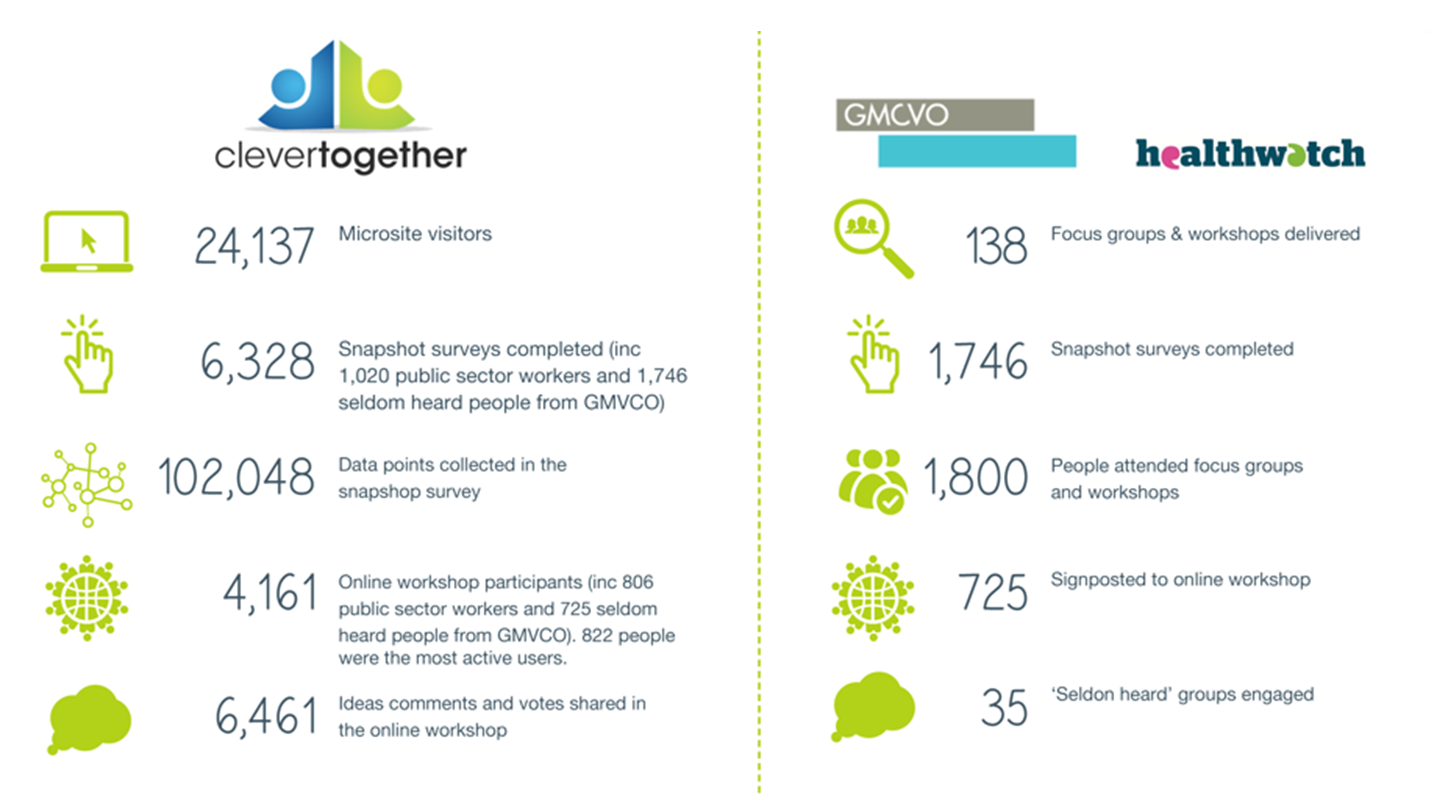
From Feb 15 to the end of March, GMCVO conducted conversations with their communities and hard to reach groups across all 10 localities and also delivered five deep dive focus groups. To aid the process, GMCVO used:
- the structure of the digital events to guide the design and structure of its conversations and focus groups (this helped to generate insights that can be more easily brought together by all partners in the analysis phase), and
- Clever Together’s guidance to empower community advocates and volunteers to promote and join the online workshop and survey.
During this period, Key103’s radio and web broadcasts and MEN’s editorial pointed the public to the public survey and online workshop hosted by Clever Together. Whilst Clever Together used its digital marketing and physical outreach to build public interest.
Simultaneously, Clever Together worked with the GMHSC Partnership to identify a network of organisations that support carers and enrol them into a dedicated digital event to explore the issues face by carers.
Consequently, The GMHSC Partnership and Clever Together monitored and facilitated three virtual events via the crowdsourcing platforms to explore what helps or hinders people taking charge and to identify examples of good practice – generating insight from three perspectives:
- the public,
- carers,
- the workforce that provide health and care to the people of GM.
The virtual events (crowdsourcing platforms) were closed at the end of March, two weeks after the Key103 community road shows had finished.